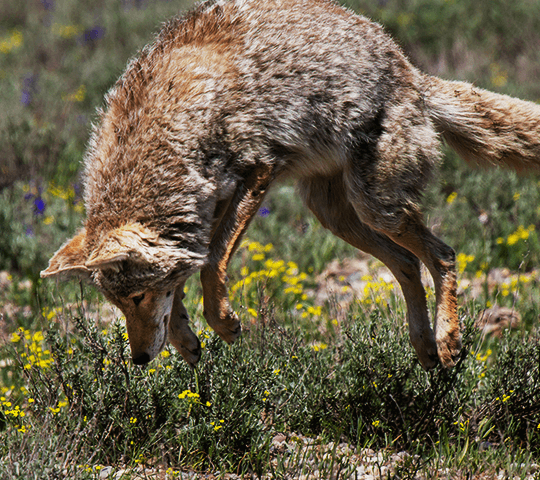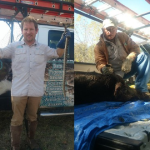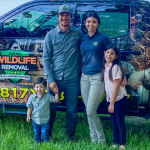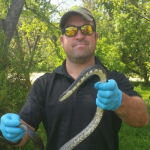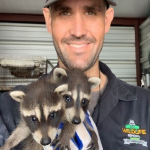Coyotes (or American jackals and prairie wolves) are one of the many famous wild canines of North America. They are bigger than foxes, smaller than wolves and resemble many domesticated dogs.
They have had to make do with human encroachment by adapting to many environments such as grasslands, arid deserts, and suburban environments. Unfortunately, this also means that they can pose a danger to humans and pets when they get too close to human-inhabited areas.
Coyotes, often recognized as the trickster in many folk tales, are an integral part of our natural environment. They are opportunistic feeders and adapt easily to varied surroundings, including urban areas. As skilled hunters and scavengers, they play a key role in the ecosystem. However, their presence can sometimes pose challenges for home and business owners.
Appearance
General Characteristics Coyotes are members of the canine family and resemble a small dog or a medium-sized wolf. They have pointed ears, a slender muzzle, and a bushy tail which often points downwards when they move.
Coloration/Patterns/Distinctive Markings Their fur is primarily gray or reddish-brown with a white underbelly and throat. Some may have a dark streak running down their back and onto the tail.
Size/Features On average, coyotes weigh between 20-50 pounds and measure about 4-5 feet in length from the nose to the tip of the tail. They have long, slender legs ideal for running and a keen sense of hearing and smell.
Biology
Digestion and Diet Coyotes are omnivorous. While they primarily hunt small mammals like rabbits and rodents, they also consume fruit, vegetables, and occasionally deer. In urban areas, they might rummage through garbage or eat pet food left outside.
Reproduction Mating takes place between late January and March. After a gestation period of around 63 days, females give birth to a litter of 3-12 pups. Pups are raised in dens and are cared for by both parents.
Unique Sensory Systems Coyotes have an excellent sense of smell and hearing, which aids in hunting and communication. They use a series of yips, barks, and howls to communicate with pack members and establish territory.
Habitat
Preferred Environments They are highly adaptable creatures found in a variety of habitats including forests, grasslands, deserts, and even urban settings.
Urban Encounters Urban sprawl and habitat loss have brought coyotes closer to human habitation. They are often seen in parks, golf courses, and even backyards.
Temperature Regulation Coyotes are well-adapted to both hot and cold environments. They grow a thicker coat in the winter and shed it during warmer months. Their burrows also provide shelter from extreme temperatures.
Behavior
Defensive Mechanisms When threatened, coyotes might exhibit a series of aggressive postures including baring teeth and growling. However, they usually prefer to avoid confrontations and will retreat if possible.
Hunting Techniques Coyotes are both hunters and scavengers. They employ a keen sense of hearing and smell to stalk and ambush their prey or locate carrion.
Migratory Patterns While coyotes generally maintain a territory, food scarcity or the presence of larger predators can lead them to roam beyond their usual range.
Damage/Problems
Diseases Coyotes can be carriers of rabies and other zoonotic diseases which may pose a threat to domestic pets and occasionally humans.
Burrowing Coyotes dig burrows for shelter and raising pups. This can lead to erosion or undermine structures like fences or buildings.
Structural Damage In search of food, they might dig through trash, causing a mess, or even attempt to prey on small pets left outside.
Trapping & Removal
Safe Handling It's crucial to handle coyotes with care, respecting their wild nature and potential to spread disease. Professionals are trained to handle them without harm to the animal or themselves.
Relocation Once trapped, coyotes should be relocated to an appropriate wild habitat away from human habitation, ensuring minimal stress to the animal and safety to the community.
Deterrence/Prevention
Property Maintenance Removing food sources, securing trash cans, and not leaving pet food outside can make your property less attractive to a wandering coyote.
Physical Barriers High fences with a roll bar at the top can deter coyotes from entering your property.
Exclusion Ensure that potential denning sites, like under decks or sheds, are sealed off to prevent them from settling in.
Your peaceful coexistence with these beautiful wild creatures can sometimes be disrupted due to their nature. When they become a problem, call upon the experts at AAAC Wildlife Removal. We ensure humane, professional, and effective solutions to all your coyote concerns. With years of experience, we pride ourselves in serving both the community and the wildlife.
























